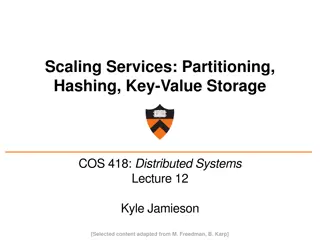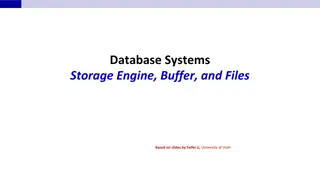
Energy-Efficient Computing: Scaling Storage Systems
This lecture discusses power-proportional storage systems in the context of failures, app interference, and data block efficiency. It covers layout policies, fault tolerance, and challenges in designing energy-efficient storage solutions.
Download Presentation

Please find below an Image/Link to download the presentation.
The content on the website is provided AS IS for your information and personal use only. It may not be sold, licensed, or shared on other websites without obtaining consent from the author. If you encounter any issues during the download, it is possible that the publisher has removed the file from their server.
You are allowed to download the files provided on this website for personal or commercial use, subject to the condition that they are used lawfully. All files are the property of their respective owners.
The content on the website is provided AS IS for your information and personal use only. It may not be sold, licensed, or shared on other websites without obtaining consent from the author.
E N D
Presentation Transcript
CSE 591: Energy-Efficient Computing Lecture 15 SCALING: storage Anshul Gandhi 347, CS building anshul@cs.stonybrook.edu
Objectives 1. Power-proportional storage system 2. PP in the presence of failures 3. Avoid interference between competing apps 4. Avoid writing unnecessary data blocks Maintain only required replicas Considers an HDFS-like FS where all data is important and equally accessed (mostly). This is unlike web data which has skewed popularity.
Simple policy primary (r-1) replicas (N-p) nodes B/N load (N >> p) p nodes B/p load
Requirements of layout policy The equal-work policy ensures equal load sharing. Formally, the equal-work policy is the result of an optimization problem that minimizes p with the constraints, tputi = (i/p)tputp for all i = p + 1, ..., N for a given replication factor r.
Equal work policy LB challenge ith node has B/i blocks, but how many requests to these blocks should it serve? ith node hosts more blocks than (i+j)th node.
Challenges 1. Data layout for power savings 2. Maintain read and write availability during failures 3. Predict needed capacity to sustain load






















